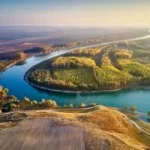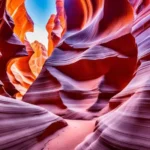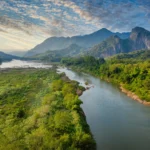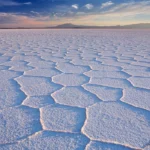
The boreal forest is considered to be a wonder of the natural world, spanning a great deal of the Northern Hemisphere’s land. The boreal forest is characterized by its diverse coniferous tree species, unique plants, animal species, bird species, and lakes and wetlands. The boreal forest is also referred to as the taiga, or snow forest, and it covers much of Canada, Alaska, some of the northern U.S. states, Sweden, Finland, Norway, Iceland, Russia, northern Kazakhstan, northern Japan, and northern Mongolia. The boreal forest covers just less than 30% of forest cover in the world, with the largest regions in Canada and in Russia.
The Boreal forest is the world’s largest intact forest ecosystem. It stretches across 1.2 billion acres (485 million hectares) of northern Canada, from the Yukon to Newfoundland and Labrador.
The boreal forest includes a wide diversity of coniferous tree species including balsam fir, white birch, red pine, jack pine, eastern white cedar, poplar, white spruce, and black spruce.
The boreal forest represents 25 percent of the world’s remaining intact forest, even more than the Amazon rain forest.
The boreal forest is home to a variety of bird species, some that live there permanently and some that migrate depending on the season. Some of the birds found in the boreal forest include kingfishers, owls, hummingbirds, hawks, woodpeckers, and even vultures. There are also many songbirds in the boreal forest.
The boreal forest contains 25 percent of the world’s wetlands.
The boreal forest is home to many large mammal species including black bears, grizzly bears, wolves, caribou, moose, reindeer, sheep, foxes, polar bears, giant pandas, wolverines, elk, mountain goats, wild boars, Siberian tigers, lemmings, and deer.
The boreal forest includes more surface freshwater—about 200 million acres (81 million hectares)—than anywhere else on Earth.
Smaller mammal species that make the boreal forest their home include bats, beavers, squirrels, flying squirrels, chipmunks, raccoons, rabbits and hares, river otters, badgers, moles, and picas.
The boreal forest is North America’s bird nursery. Each year, 1 billion to 3 billion birds migrate north from the United States—and from as far away as South America—to nest in Canada’s boreal forest. Between 3 billion and 5 billion return south each fall after a successful breeding season.
Marine mammals that can be found in the boreal region waters include northern fur seals, walruses, harbour seals, harp seals, humpback whales, beluga whales, narwhals, killer whales, and dolphins.
The boreal forest stores twice as much carbon per acre as tropical rain forests.
The boreal forest is also home to a wide variety of insects including grasshoppers, bees, ants, butterflies, dragonflies, beetles, and even mosquitos.
In all, Canada’s boreal forests and peatlands lock in a minimum of 229 billion tons of carbon.
There are forest management programs in place to protect the ecosystem of the boreal forest. The programs exist in Russia, Scandinavia, the U.S., and in Canada, where much of the boreal forest of the world exists.
The boreal forest is home to some of the cleanest and deepest freshwater lakes on the planet.
The quality of soil in the boreal forest is inferior to that of the soil found in deciduous forests, partly because of the colder climate. The fallen leaves and moss do not always decompose into the soil, and the needles from the evergreen trees tend to be acidic.
Great Bear Lake, in the Northwest Territories, is considered the world’s largest unpolluted lake.
The boreal forest is susceptible to fire, insects and disease, which in Canada destroys or disrupts 1% of the total boreal forest each year. Trees do regrow however. Because of the fires there are not many regions in Canada where boreal forest is older than 100 years. There are a few stands of white spruce that are more than 250 years old, but not many.
Great Slave Lake, also in the Northwest Territories, is North America’s deepest lake.
Global warming and climate change are making it easier for tree-damaging insects to survive in the boreal forest.
The boreal forest is named after Boreas, the Greek god of the Northwind.
Climate change and warming of the earth are also resulting in reduced tree growth in the boreal forest.
The biome is known as boreal in Canada, but is also known as taiga, a Russian word.
As the temperatures across the world rise, the boreal forest is being replaced in its more southern regions by temperate forest, parkland, or grassland.
The boreal represents approximately 30% of the world’s forest cover.









